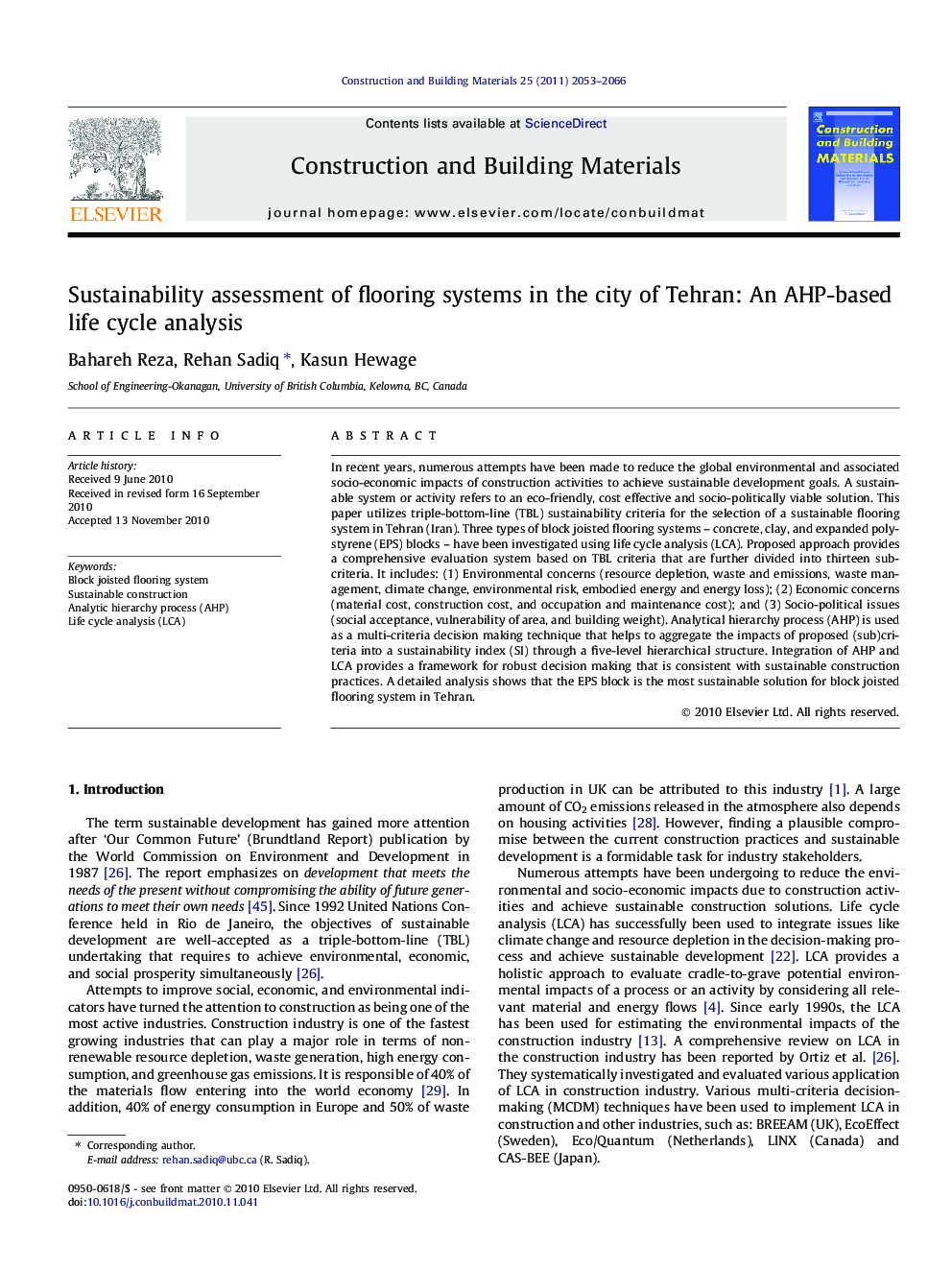| Article ID | Journal | Published Year | Pages | File Type |
|---|---|---|---|---|
| 259748 | Construction and Building Materials | 2011 | 14 Pages |
In recent years, numerous attempts have been made to reduce the global environmental and associated socio-economic impacts of construction activities to achieve sustainable development goals. A sustainable system or activity refers to an eco-friendly, cost effective and socio-politically viable solution. This paper utilizes triple-bottom-line (TBL) sustainability criteria for the selection of a sustainable flooring system in Tehran (Iran). Three types of block joisted flooring systems – concrete, clay, and expanded polystyrene (EPS) blocks – have been investigated using life cycle analysis (LCA). Proposed approach provides a comprehensive evaluation system based on TBL criteria that are further divided into thirteen sub-criteria. It includes: (1) Environmental concerns (resource depletion, waste and emissions, waste management, climate change, environmental risk, embodied energy and energy loss); (2) Economic concerns (material cost, construction cost, and occupation and maintenance cost); and (3) Socio-political issues (social acceptance, vulnerability of area, and building weight). Analytical hierarchy process (AHP) is used as a multi-criteria decision making technique that helps to aggregate the impacts of proposed (sub)criteria into a sustainability index (SI) through a five-level hierarchical structure. Integration of AHP and LCA provides a framework for robust decision making that is consistent with sustainable construction practices. A detailed analysis shows that the EPS block is the most sustainable solution for block joisted flooring system in Tehran.
Research highlights► In this study we evaluated flooring systems based on TBL sustainability criteria. ► We applied the AHP-based life cycle analysis as a comprehensive evaluation system. ► We analyzed the whole life cycle of three common flooring systems in Tehran. ► The study shows that, EPS block is the most sustainable option among alternatives.
